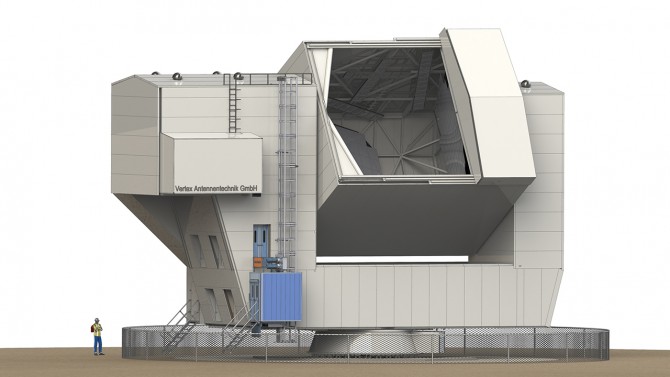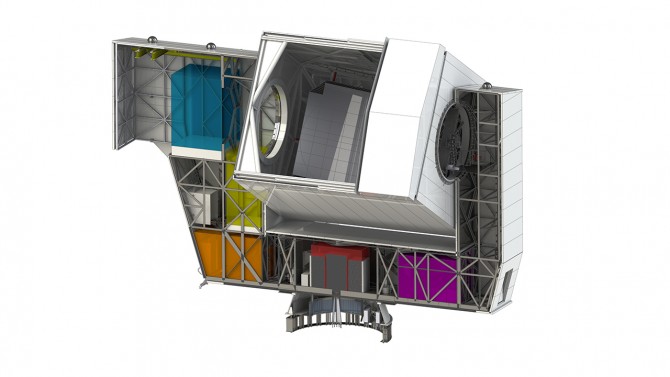Fabrication of powerful telescope begins
By Linda B. Glaser
Fabrication of the Cerro Chajnantor Atacama Telescope-prime (CCAT-p), a powerful telescope capable of mapping the sky at submillimeter and millimeter wavelengths, has now begun, marking a major milestone in the project.
The 6-meter aperture telescope will be installed near the top of Cerro Chajnantor, a peak in Chile’s Atacama Desert. CCAT-p will provide insights into “cosmic dawn” – when the first stars were born after the Big Bang – as well as how stars and galaxies form and the dark-energy-driven expansion of the universe. The telescope’s novel optical design, high-precision mirrors and high-altitude location (over 18,000 feet) will give scientists important new opportunities for astrophysics and cosmology research.
Vertex Antennentechnik GmbH of Duisburg, Germany, is fabricating the telescope’s components. The design review process took nearly two years, and some of the parts will take nearly as long to fabricate, such as the telescope’s two mirrors, said project director Terry Herter, professor and chair of Cornell’s Department of Astronomy.
Once the fabrication is complete, the parts will be assembled at a location in Europe and functional tests will be performed on the complete structure. The telescope will then be broken down and transported to Chile in 2020, where it will be reassembled and installed on a concrete base on Cerro Chajnantor.
“This project has been in development for a long time, and it’s exciting to see it so close to becoming a reality,” said Martha Haynes, CCAT Observatory board chair and Cornell’s Goldwin Smith Professor of Astronomy. “With the short time frame for construction, we should have the telescope on top of the mountain and collecting data in a little more than two years.”
That moment – what astronomers call “first light – is on schedule to take place in the middle of 2021.
CCAT-Prime is thanks in large part to the vision and generosity of Fred Young ’64, noted Haynes. He has been a CCAT supporter from the beginning and has participated in design reviews, including the most recent in late October.
“It is exciting and satisfying that we have reached the initial construction phase,” Young said. “Much remains to be done, and we’re finalizing the last bit of support, but the start of science efforts with the telescope is within view. This is a tribute to the foresight and unrelenting effort of the many participants in this important project.”
Cornell Provost Michael Kotlikoff said: “This is an exciting scientific endeavor for Cornell and an important investment in the future of our outstanding astronomy and astrophysics research programs. Fred’s unflagging support has made Cornell’s leadership of the project possible.”
The CCAT corporation is a partnership of Cornell; the German CCAT Consortium, which includes the German Universities of Cologne and Bonn and the Max Planck Institute; and the Canadian Atacama Telescope Consortium (CATC), a consortium of Canadian academic institutions. Faculty and staff at several other institutes in the U.S., Canada, Chile and Germany are also involved in science planning and instrumentation development.
Linda B. Glaser is a staff writer for the College of Arts and Sciences.
Media Contact
Get Cornell news delivered right to your inbox.
Subscribe


